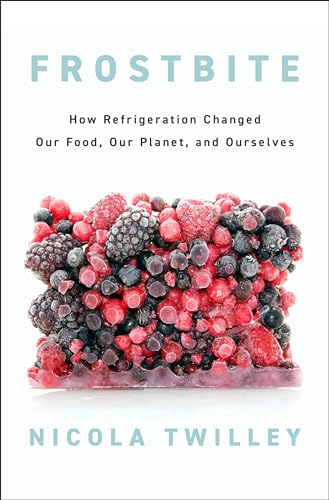What do you think?
Rate this book


400 pages, Hardcover
First published June 25, 2024
... the phrase "to vegetable" encompasses the way in which humans take a plant and breed it so it can be harvested when it's super immature so that it's tender and lovely and we want to eat it, but also how we then reverse engineer its metabolism so that the twilight years of that harvested fruit or leaf will extend indefinitely.The following excerpt explores some cultural influences resulting from wide food availability.
... Of course, as in Oscar Wilde's Fable of eternal youth, when we received the thing we ask for, it's often accompanied by a host of unexpected and frequently undesirable consequences. Refrigerated storage allows perishable bananas, apples, and avocados to circulate as commodities. Controlled atmosphere warehouses transform seasonal gluts into accumulated capital. Ripening rooms enable demand to drive supply. A refrigerated supply chain is the reason we eat imported bananas rather than North America's own semi-tropical fruit, the pawpaw. Control the atmosphere storage created the Cosmic Crisp and its influencer-led launch. Ripening rooms fueled avocado toast's ascent to millennial meme, and frozen juice made OJ a mainstay of the breakfast buffet.Below is a long excerpt about a proposed refrigerator and kitchen with a variety of special environments for optimum storage.
Designer Jihan Rio describes her mission as to save food from the fridge. It began with an observation upon the advent of the mechanical refrigerator, not only did once common food storage and preservation spaces like the root cellar or pantry vanish, but so too did our appreciation of food as fellow organic matter, an awareness that each carrot or egg is also living tissue with its own metabolic processes and peculiarities.
Seen from this perspective, although it might be a convenient one-stop solution for us, for much of the food we eat, the fridge does not necessarily represent an upgrade. The diversity of household food storage options in the past allowed our predecessors to keep different foods in the environment that best fit each item's unique needs. Soft cheeses like brie or camembert prefer conditions that are more humid and warmer than the standard fridge. Marble slab in a cupboard beneath the stairs was ideal for them. The cool dark damp of a root cellars suited the storage requirements of potatoes perfectly. In the refrigerator, they tend to darken and become unpleasantly sweet while exposure to daylight at room temperature causes them to turn green and sprout.
Perishable foods don't necessarily play well stored together, the ethylene emitted by apples causes bell peppers and cucumbers to soften and rot while milk and eggs can absorb the aromatic chemicals emitted by nearby cabbages or mangoes. Food producers know this perfectly well. Think of the vast, controlled atmosphere Apple warehouses of Washington State or muster purveyor's meat locker in the Bronx with its carefully regulated temperature and humidity and its battery of fans to manage airflow. Fruit and vegetable wholesalers like Gabriella Dorigo wouldn't dream of storing avocados under the same conditions as berries. Post-harvest physiologist Natalia Falagan told me she shudders whenever she sees a peach in a home refrigerator where the temperature is smack in the middle of what she called the stone fruit killing zone.
Wondering how to make this understanding of fresh food? How we should treat it and how long it should last? Common knowledge rather than the preserve of experts led Jihan Rio to her solution. A set of ingenious wall-mounted and countertop units that draw on traditional pre-refrigeration food storage techniques. Fruits, vegetables and eggs all would be freed from our monolithic fridges and instead distributed in a series of carefully tailored environmental niches around the kitchen. After all, beer and ice cream need to be cold, but produce doesn't. It just has to be preserved. Rio, who is currently at work on the perfect housing for tomatoes, explained that she bases her designs on scientific research, but also on conversations with farmers and grannies.
Her root vegetable unit is a U-shaped shelf made of beeswax treated maple. The glass panel holds the damp sand in which carrots and leeks are buried alongside a little funnel to top up moisture levels as needed. It almost looks as though the vegetables are still in the ground, ready to be harvested with just the orange tops and feathery green fronds of the carrot visible above the sand surface. And that is precisely the point. Rio has found that the root vegetables last longer and taste better stored upright in slightly damp, loose sand because it mimics their growing conditions. Other units include a beautiful marble dish carved into a circular stepwell in which cabbages and Romanesco broccoli can sit with just their stems in a thin layer of cool water almost like a birdbath for brassicas. An enclosed potato drawer cleverly vents to an apple storage shelf above taking advantage of the fact that the ethylene emitted by apples inhibits sprouting in potatoes.
Rather than throwing everything in the crisper drawer of their refrigerator. A shopper returning home to their Rio designed kitchen would simply slot carrots into their sandy shelf unit and place bell peppers on another specially humidified shelf. Put their apples away on top of the potato drawer and sit their cauliflower on its marble throne.
